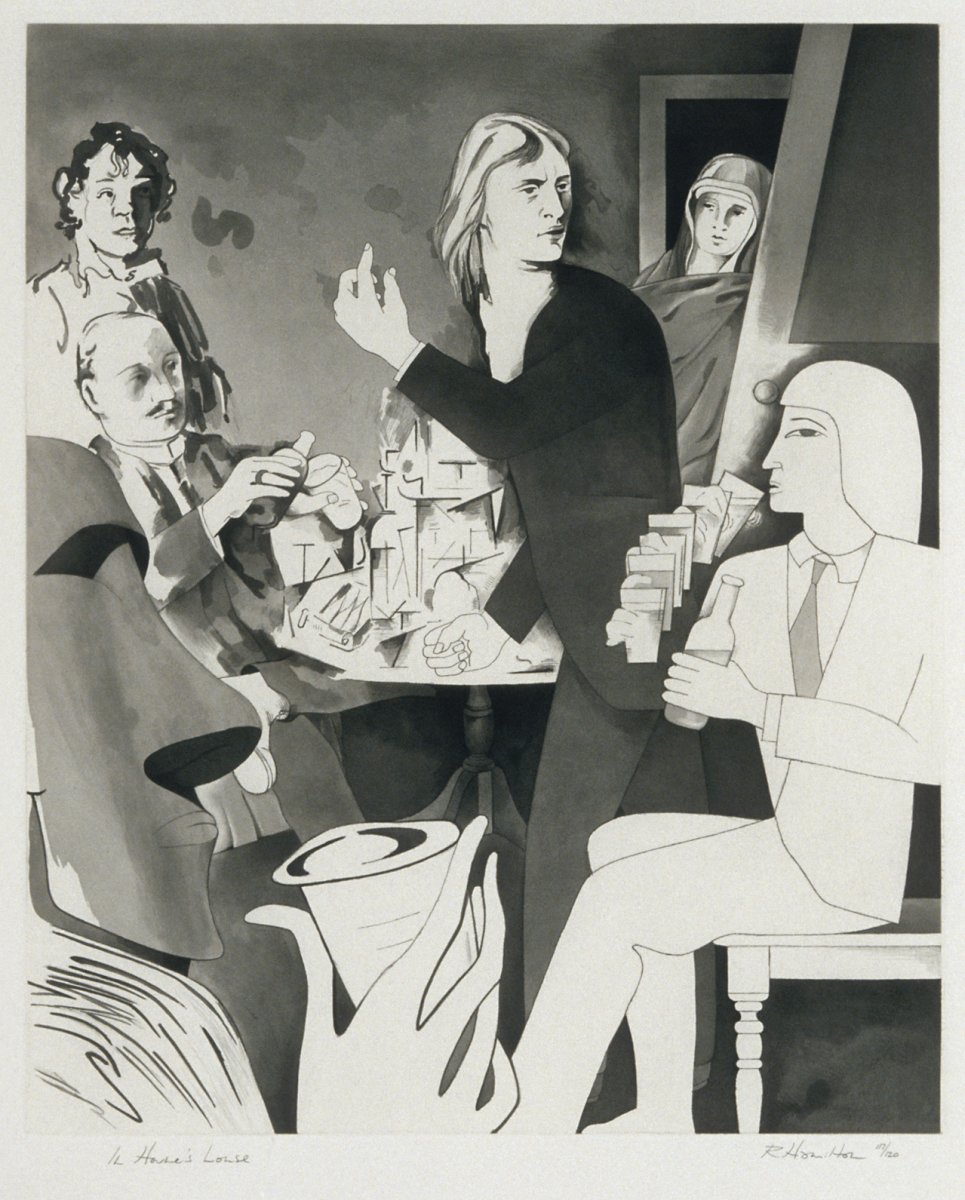In Horne’s House
Richard Hamilton (1922 - 2011)
Hard-, soft-ground and stipple etching, lift ground aquatint and engraving
1981-1982
-
About the work
- Location
-
Country: Egypt
City: Cairo
Place: British Embassy
-
About the artist
Richard Hamilton was born in London into a working class family and left school without any formal qualifications. He started work as an apprentice in an electrical components firm where he discovered his skill as a draughtsman and he began attending evening classes at St Martin's School of Art. After working as a technical draughtsman during the second World War, he enrolled at the Royal Academy Schools but was later expelled on grounds of ‘not profiting from the instruction’. The loss of his student status forced Hamilton to undertake National Service after which he studied at the Slade School of Art from 1948 to 1951. In 1952 he co-curated a series of exhibitions at the Institute of Contemporary Art, London, which are regarded as marking the beginning of British Pop Art. In 1956, Hamilton exhibited work in the This is Tomorrow exhibition at the Whitechapel Gallery, London. His poster for the exhibition has subsequently become one of the most famous pieces of Pop Art. The collage, Just what is it that makes today’s homes so different, so appealing? (1956), combines images of a male body-builder, a vacuum cleaner, a television, a can of tinned ham and a Ford car logo, among other items. In his use of advertisements and images from magazines and newspapers, Hamilton’s work emphasised how popular visual could be incorporated into fine art. In 1957 Hamilton wrote in a letter to his friends, the architects, Peter and Alison Smithson: Pop art is: Popular (designed for a mass audience), Transient (short-term solution), Expendable (easily forgotten), Low Cost, Mass Produced, young (aimed at youth), Witty, Sexy, Gimmicky, Glamorous, Big Business. The success of This Is Tomorrow secured Hamilton’s position in the art world and he exhibited consistently. In the early 1960s he was pivotal in the preservation of Kurt Schwitters Merzbau, now installed at the Hatton Gallery in the university of Newcastle and in 1966 curated the first British retrospective of Marcel Duchamp's work at the Tate in 1966. In 1993 Hamilton represented Great Britain at the Venice Biennale and was awarded the Golden Lion. A comprehensive selection of his work is held at the Tate and a retrospective was held at Tate Modern, three years after his death at the age of 89 in 2014.
-
Explore
- Places
- Subjects
- Materials & Techniques
-
Details
- Title
- In Horne’s House
- Edition
- 117/120
- Date
- 1981-1982
- Medium
- Hard-, soft-ground and stipple etching, lift ground aquatint and engraving
- Dimensions
- width: 58.50 cm, height: 76.00 cm
- Acquisition
- Purchased from Alan Cristea Gallery, March 2002
- Inscription
- below image: In Horne's House / R Hamilton 117/120
- Provenance
- Alan Cristea Gallery, London
- GAC number
- 17651